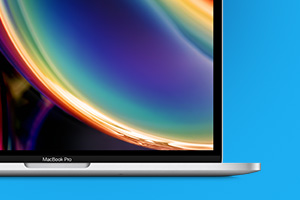1 min read
Are you integrating Apple with your employees’ work lives?
The truth about workplace modernization is that it often reflects the modernization of our personal lives. Whatever devices and apps you use in your...

Just a few short years ago, the “bring your own device” (BYOD) approach to office technology was en vogue. Companies figured out that BYOD let employees take workplace modernization into their own hands – by letting people use whatever personal devices they were most comfortable with, they could drive greater employee productivity and satisfaction.
Now, though, in a post-COVID-19 world, we’re all collectively trying to find the best way forward. It’s no longer as simple as letting everyone bring their devices to a shared workspace – we live in a world of remote and hybrid work, which means people are taking their IT anywhere and everywhere. There are numerous questions about how best to manage that.
According to TechTarget, the future of BYOD is a major topic being debated in IT circles in 2022. On one hand, enterprises have known for some time that BYOD can be a great cost-cutting measure if executed right. You save a great deal on procuring devices, and all you need to do is make sure people’s devices have access to corporate resources like email, applications, and data. On the other hand, coming up with an effective BYOD policy in this new era is a challenge.
Users today have an expectation of mobility and flexibility. They expect to use their devices and use them productively. But to make that a win-win proposition for people and their employers, IT leaders need to take a few things into account. Here’s a rundown of all the key factors to consider…
It’s probably necessary for companies to have certain baseline requirements for what personal devices are acceptable. What manufacturers are allowed? What operating systems must people have? What minimum security measures need to be in place? A standardized set of rules here is key.
Every employee must have access to certain basic needs in order to do their job effectively. These needs vary from person to person, but they typically include a few basic applications, access to communication channels like email, and the data people use in the course of their daily work routines. It’s important to make sure everyone can access these elements from their devices.
Lost devices. Stolen devices. Damaged devices. These incidents aren’t fun for anyone, but the reality is they do happen. Corporate IT offices need to have established action plans ready so they can respond quickly in the event of device disasters.
There’s no doubt – letting people use their personal devices is a great way to increase employee satisfaction. People work more productively and conveniently on the devices they’re familiar with. But they also might let their guard down a little bit when it comes to security, and it’s important for IT not to let this become an issue. Companies will need to establish some ground rules to ensure their people don’t let corporate data slip into the wrong hands.
If you’re looking for a little help navigating this new BYOD world, Zones can help. We offer a Remote Worker Solution that’s designed to simplify IT for your distributed workforce, and that package includes many offerings that can help with managing user devices. From Mobile Device Management to Collaboration to Technical Support, our solutions can be tailored to meet the needs of a highly mobile, remote, self-sufficient workforce.
To learn more, reach out today. A Zones Account Manager would love to hear from you.

1 min read
The truth about workplace modernization is that it often reflects the modernization of our personal lives. Whatever devices and apps you use in your...

2 min read
Over the last few years, we’ve witnessed a dramatic shift in the way companies approach workplace modernization – and for obvious reasons. It’s still...

2 min read
In the retail industry, IT leaders have long had a focus on workplace modernization. After all, when you implement better technology in retail,...